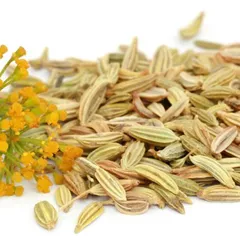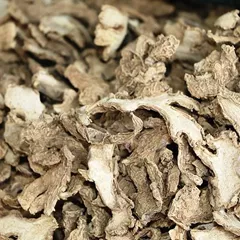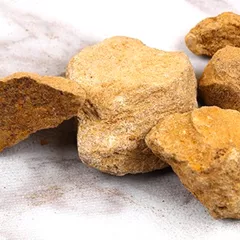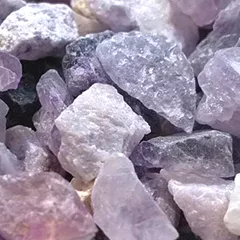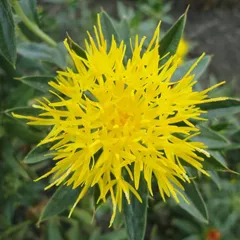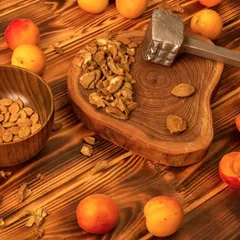Shi Xiao San
Shi Xiao San
Chinese: 失笑散
Pinyin: Shī Xiào Sàn
Other names: Sudden Smile Powder, Breaking into a Smile Powder,

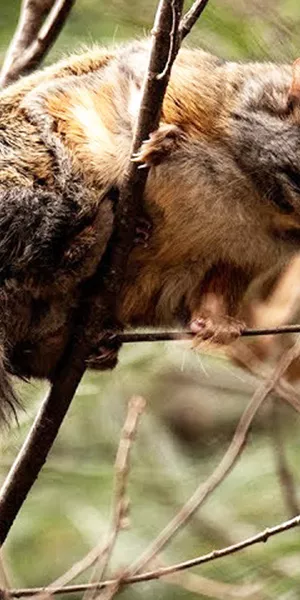
Shi Xiao San
Shi Xiao San
Chinese: 失笑散
Pinyin: Shī Xiào Sàn
Other names: Sudden Smile Powder, Breaking into a Smile Powder,
Number of ingredients: 2 herbs
Formula category: Formulas that invigorate Blood and dispel Blood Stagnation
Conditions for which it may be prescribed: DysmenorrheaEpigastric painContinuous lochia and four other conditions
- Invigorates Blood
- Dispels Blood Stagnation
- Eases pain
Contraindications: Contraindicated during pregnancy because of the formula's general ability to... Contraindicated during pregnancy because of the formula's general ability to dispel Blood Stagnation. Also, Cattail Pollen (Pu Huang) can give rise to uterine contractions. Patients with Stomach Deficiency should pay special attention because Flying squirrel faeces can harm Stomach Qi. see more
Source date: 1108 AD
Source book: Materia Medica Arranged According to Pattern
The information provided here is not a replacement for a doctor. You shouldn't use it for the purpose of self-diagnosing or self-medicating but rather so you can have a more informed discussion with a professional TCM practitioner.
Shi Xiao San is a 2-ingredient Chinese Medicine formula with Cattail Pollen (Pu Huang) and Flying Squirrel Faeces (Wu Ling Zhi) as principal ingredients.
Invented in 1108 AD, it belongs to the category of formulas that invigorate Blood and dispel Blood Stagnation. Its main actions are: 1) invigorates Blood and 2) dispels Blood Stagnation.
In Chinese Medicine health conditions are thought to arise due to "disharmonies" in the body as a system. These disharmonies are called "patterns" and the very purpose of herbal formulas is to fight them in order to restore the body's harmony.
In this case Shi Xiao San is used by TCM practitioners to fight patterns like Blood Stagnation, Liver Blood Stagnation or Qi And Blood Stagnation. From a Western Medicine standpoint, such patterns can give rise to a range of conditions such as abnormal uterine bleeding, heavy menstruation or irregular menstruation for instance.
On this page, after a detailed description of each of the two ingredients in Shi Xiao San, we review the patterns and conditions that Shi Xiao San helps treat.
The two ingredients in Shi Xiao San

Pu Huang is a king ingredient in Shi Xiao San. Like the name indicates, it means it has more power than other ingredients in the formula.
1. Cattail Pollen (Pu Huang)
Part used: Dried pollen
Nature: Neutral
Taste(s): Sweet
Meridian affinity: SpleenHeartLiverPericardium
Category: Herbs that stop bleeding
Pu Huang is neutral and sweet and it enters the Liver Blood. It not only strongly supports Blood circulation, but also stops bleeding.

Wu Ling Zhi is a king ingredient in Shi Xiao San. Like the name indicates, it means it has more power than other ingredients in the formula.
2. Flying Squirrel Faeces (Wu Ling Zhi)
Part used: Dried faeces
Nature: Warm
Meridian affinity: SpleenLiver
Category: Herbs that invigorate the Blood
In general Wu Ling Zhi's main actions are as follows: "Disperses congealed Blood in the lower abdomen and uterus and relieves pain. Promotes childhood nutrition with Cold Stagnation and focal abdominal swelling."
In the context of Shi Xiao San, it is used because it is sweet and warming. It promotes Blood circulation and removes Blood Stagnation.
Conditions and patterns for which Shi Xiao San may be prescribed
It's important to remember that herbal formulas are meant to treat patterns, not "diseases" as understood in Western Medicine. According to Chinese Medicine patterns, which are disruptions to the body as a system, are the underlying root cause for diseases and conditions.
As such Shi Xiao San is used by TCM practitioners to treat four different patterns which we describe below.
But before we delve into these patterns here is an overview of the Western conditions they're commonly associated with:
Abnormal uterine bleeding Heavy menstruation Irregular menstruation Dysmenorrhea Postpartum abdominal pain Continuous lochia Epigastric pain
Again it wouldn't be correct to say "Shi Xiao San treats abnormal uterine bleeding" for instance. Rather, Shi Xiao San is used to treat patterns that are sometimes the root cause behind abnormal uterine bleeding.
Now let's look at the four patterns commonly treated with Shi Xiao San.

Blood (Xue) is one of Chinese Medicine's vital subtances. Learn more about Blood in Chinese Medicine
Blood Stagnation
Pulse type(s): Choppy (Se), Firm (Lao), Wiry (Xian)
Tongue color: Reddish-Purple
Symptoms: Lumps Tremor Numbness Dark face Dizziness Purple lips Purple nails Blotchy skin Restlessness Itching scalp Painful period Abdominal mass Scanty periods Abdominal pain Abdominal masses Skin capillaries Hesitant periods Tendency to bleed Premenstrual pain Dark colored blood Traumatic swelling Shoulder stiffness Absence of menstruation Boring fixed stabbing pain Frequent bleeding episodes Dark clots in menstrual blood Abdominal distention and fullness
Shi Xiao San is sometimes prescribed by TCM practitioners to treat Blood Stagnation. This pattern leads to symptoms such as dark face, purple lips, boring fixed stabbing pain and abdominal masses. Patients with Blood Stagnation typically exhibit choppy (Se), firm (Lao) or wiry (Xian) pulses as well as Purple tongue .
Blood Stagnation - also often referred to as "Blood Stasis" - is where the Blood flow is heavily restricted in all or parts of the body. It is one of the most important diagnostic conditions in Chinese Medicine because it is frequently the cause of intractable pain syndromes anywhere in the... read more about Blood Stagnation
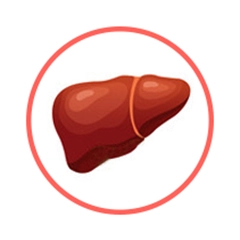
The Liver is a so-called "Zang" Organ. Learn more about the Liver in Chinese Medicine
Liver Blood Stagnation
Pulse type(s): Wiry (Xian)
Tongue color: Bluish-Purple sides
Symptoms: Dry skin Epistaxis Infertility Purple lips Purple face Purple nails Abdominal pain Painful period Abdominal masses Purple petechiae Vomiting of blood Hypochondrial pain Dark colored blood Irregular menstruation Dark clots in menstrual blood
Shi Xiao San is sometimes prescribed by TCM practitioners to treat Liver Blood Stagnation. This pattern leads to symptoms such as hypochondrial pain, abdominal pain, vomiting of blood and epistaxis. Patients with Liver Blood Stagnation typically exhibit wiry (Xian) pulses as well as Purple tongue or purple spots on sides. .
Liver Blood Stagnation usually develops from other patterns and Liver Qi Stagnation, Cold and Heat are the three most common ones. Sometimes Qi Deficiency, Blood Deficiency and Phlegm can also be the precursors.
Liver Qi Stagnation is the most common cause. If left unchecked for a while without... read more about Liver Blood Stagnation
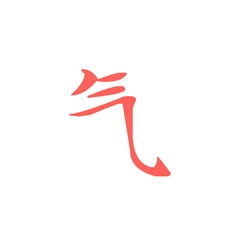
Qi is one of Chinese Medicine's vital subtances. Learn more about Qi in Chinese Medicine
Qi And Blood Stagnation
Pulse type(s): Choppy (Se), Deep (Chen), Fine (Xi)
Symptoms: Insomnia Dark face Moodiness Dizziness Chest pain Depression Amenorrhea Purple lips Mood swings Breast pain Hot flushes Purple nails Irritability Blotchy skin Restlessness Breast lumps Restlnessness Chest fullness Painful period Scanty periods Clots in blood Abdominal pain Abdominal masses Lochia retention Breast distention Dark colored blood Abdominal fullness Intense period pain High blood pressure Swelling of the feet Lower abdominal pain Dark menstrual blood Flooding and leaking Abdominal distension Pre-menstrual tension Black and tarry stools Irregular menstruation Boring fixed stabbing pain Pre-menstrual irritability Dark clots in menstrual blood Menstruation decreases gratually Feeling of fullness in the chest Abdominal distention and fullness Pain relief after clots discharge
Shi Xiao San is sometimes prescribed by TCM practitioners to treat Qi And Blood Stagnation. This pattern leads to symptoms such as chest fullness, chest pain, boring fixed stabbing pain and dark face. Patients with Qi And Blood Stagnation typically exhibit choppy (Se), deep (Chen) or fine (Xi) pulses.
The typical symptoms of Qi stagnation are distension, oppression and swelling. There are also emotional issues like mood swing, depression or irritability. However, the Blood Stagnation is more on pains and purple color manifestation on skin, face, lips and nails.
Qi Stagnation can cause the... read more about Qi And Blood Stagnation
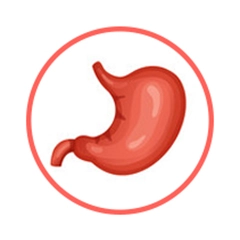
The Stomach is a so-called "Fu" Organ. Learn more about the Stomach in Chinese Medicine
Stomach Blood Stagnation
Pulse type(s): Wiry (Xian)
Tongue color: Bluish-Purple
Symptoms: Nausea Vomiting Bloody stools Epigastric pain Vomiting of blood Nausea or vomiting Possible vomiting of blood Dislike of pressure on epigastric area Severe epigastric pain that may worsen at night
Shi Xiao San is sometimes prescribed by TCM practitioners to treat Stomach Blood Stagnation. This pattern leads to symptoms such as severe epigastric pain that may worsen at night, dislike of pressure on epigastric area, nausea or vomiting and possible vomiting of blood. Patients with Stomach Blood Stagnation typically exhibit wiry (Xian) pulses as well as Purple.
Blood Stagnation often causes a pain of a stabbing or boring nature, hence the stabbing epigastric pain. This pain is much more intense than in any of the other Stomach patterns.
Stasis of Blood always manifests with dark-colored blood, hence the vomiting of dark blood in some cases.
Since the... read more about Stomach Blood Stagnation
Formulas similar to Shi Xiao San
Shao Fu Zhu Yu Tang is 20% similar to Shi Xiao San
Xiao Tiao Jing Tang is 14% similar to Shi Xiao San
Zhen Ling Dan is 12% similar to Shi Xiao San
Ge Xia Zhu Yu Tang is 8% similar to Shi Xiao San
Shen Tong Zhu Yu Tang is 8% similar to Shi Xiao San
Si Jun Zi Tang is 0% similar to Shi Xiao San


